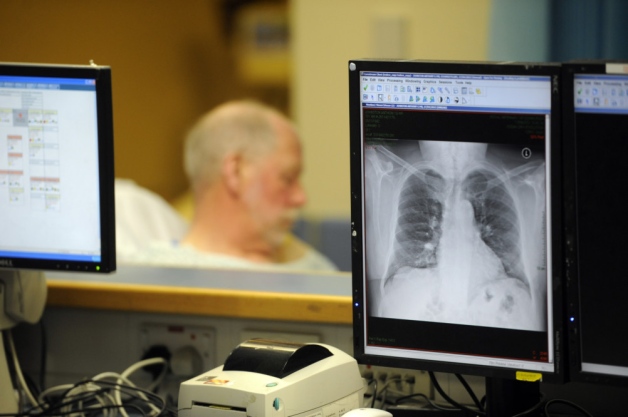Government Grants
Business Grants
Home Owner Programs
Federal Programs
About Us
Suicide Prevention Lifeline Crisis Center Follow-Up
The Substance Abuse and Mental Health Services Administration, Center for Mental Health Services, is accepting applications for fiscal year (FY) 2016 Suicide Prevention Lifeline Crisis Center Follow-Up grants.
The purpose of the National Suicide Prevention Lifeline Crisis Center Follow-Up program is to promote systematic follow-up of suicidal persons who call the National Suicide Prevention Lifeline (NSPL) network and those that are discharged from a partnering emergency department.
For those at imminent risk for suicide, emergency intervention is frequently initiated.
Research findings from the Veterans Health Administration (VA) and surveillance data from the Centers for Disease Control and Prevention have demonstrated that the period after emergency interventions is one of heightened risk for suicide, with significant numbers of deaths occurring following discharge from either an emergency department or inpatient hospitalization.
The Crisis Centers will follow-up with any individual at imminent risk of suicide within 48-hours of discharge from a partnering emergency department or who was referred from a crisis center to a partnering emergency department.
This grant program continues to support SAMHSA’s Prevention of Substance Abuse and Mental Illness Strategic Initiative through its focus on the prevention and reduction of mental illness and substance abuse across the lifespan, specifically around the reduction of suicide and suicidal behavior.
This initiative supports implementation of the National Strategy for Suicide Prevention (NSSP), Goal 8, “Promote suicide prevention as a core component of health care services.” Specifically, this FOA supports the following objectives of the NSSP:
• Promote continuity of care and the safety and well-being of all patients treated for suicide risk in emergency departments.
• Coordinate services among suicide prevention and intervention programs, health care systems, and accredited local crisis centers.
• Develop collaborations between emergency departments and other health care providers to provide alternatives to emergency department care and hospitalization, when appropriate, and to promote rapid follow up after discharge.
In FY 2015, on average, more than 120,000 calls were answered through the National Suicide Prevention Lifeline each month.
SAMHSA-funded hotline evaluations have shown that large numbers of callers have significant histories of suicidal ideation and attempts and that 43 percent of suicidal callers experienced some recurrence of suicidal ideation within several weeks after the call.
The Suicide Prevention Lifeline Crisis Center Follow-Up program also seeks to address behavioral health disparities among racial and ethnic minorities by encouraging the implementation of strategies to decrease the differences in access, service use, and outcomes among the racial and ethnic minority populations served.
(See PART II:
Appendix F – Addressing Behavioral Health Disparities.) The Suicide Prevention Lifeline Crisis Center Follow-up is one of SAMHSA’s services grant programs.
SAMHSA intends for its services grants to result in the delivery of services as soon as possible after award.
Service delivery should begin by the fourth month of the project at the latest.
Suicide Prevention Lifeline Crisis Center Follow-Up grants are authorized under Section 520A of the Public Health Service Act, as amended.
This announcement addresses Healthy People 2020 Mental Health and Mental Disorders Topic Area HP 2020-MHMD.
The purpose of the National Suicide Prevention Lifeline Crisis Center Follow-Up program is to promote systematic follow-up of suicidal persons who call the National Suicide Prevention Lifeline (NSPL) network and those that are discharged from a partnering emergency department.
For those at imminent risk for suicide, emergency intervention is frequently initiated.
Research findings from the Veterans Health Administration (VA) and surveillance data from the Centers for Disease Control and Prevention have demonstrated that the period after emergency interventions is one of heightened risk for suicide, with significant numbers of deaths occurring following discharge from either an emergency department or inpatient hospitalization.
The Crisis Centers will follow-up with any individual at imminent risk of suicide within 48-hours of discharge from a partnering emergency department or who was referred from a crisis center to a partnering emergency department.
This grant program continues to support SAMHSA’s Prevention of Substance Abuse and Mental Illness Strategic Initiative through its focus on the prevention and reduction of mental illness and substance abuse across the lifespan, specifically around the reduction of suicide and suicidal behavior.
This initiative supports implementation of the National Strategy for Suicide Prevention (NSSP), Goal 8, “Promote suicide prevention as a core component of health care services.” Specifically, this FOA supports the following objectives of the NSSP:
• Promote continuity of care and the safety and well-being of all patients treated for suicide risk in emergency departments.
• Coordinate services among suicide prevention and intervention programs, health care systems, and accredited local crisis centers.
• Develop collaborations between emergency departments and other health care providers to provide alternatives to emergency department care and hospitalization, when appropriate, and to promote rapid follow up after discharge.
In FY 2015, on average, more than 120,000 calls were answered through the National Suicide Prevention Lifeline each month.
SAMHSA-funded hotline evaluations have shown that large numbers of callers have significant histories of suicidal ideation and attempts and that 43 percent of suicidal callers experienced some recurrence of suicidal ideation within several weeks after the call.
The Suicide Prevention Lifeline Crisis Center Follow-Up program also seeks to address behavioral health disparities among racial and ethnic minorities by encouraging the implementation of strategies to decrease the differences in access, service use, and outcomes among the racial and ethnic minority populations served.
(See PART II:
Appendix F – Addressing Behavioral Health Disparities.) The Suicide Prevention Lifeline Crisis Center Follow-up is one of SAMHSA’s services grant programs.
SAMHSA intends for its services grants to result in the delivery of services as soon as possible after award.
Service delivery should begin by the fourth month of the project at the latest.
Suicide Prevention Lifeline Crisis Center Follow-Up grants are authorized under Section 520A of the Public Health Service Act, as amended.
This announcement addresses Healthy People 2020 Mental Health and Mental Disorders Topic Area HP 2020-MHMD.
Related Programs
Substance Abuse and Mental Health Services_Projects of Regional and National Significance
Department of Health and Human ServicesObtain Full Opportunity Text:
Suicide Prevention Lifeline Crisis Center Follow-Up
Additional Information of Eligibility:
Since the purpose of the National Suicide Prevention Lifeline Crisis Center Follow-Up program is to promote systematic follow-up of suicidal persons who call the NSPL network and those that are discharged from a partnering emergency department(s), SAMHSA is limiting eligibility to applicants that are members of the NSPL Crisis Center Network who provide 24-hour coverage and have an established partnership with an emergency department(s).
Crisis Centers that are members of the NSPL network have been specifically trained in the NSPL procedures for follow-up activities, imminent risk guidelines, and the NSPL risk assessment standards.
They are also the only Crisis Centers that are able to obtain the required consents from Lifeline callers for follow-up activities.
The limitations on eligibility are necessary to ensure that the infrastructure is in place to provide services to high-risk, high-priority, or underserved populations, and ensure relationships with state/local mental health systems are in place for Lifeline callers and individuals discharged from partnering emergency department(s) to receive follow-up and access to care within 48-hours of discharge.
Full Opportunity Web Address:
Contact:
Agency Email Description:
Agency Email:
FOACMHS@samhsa.hhs.gov
Date Posted:
2015-12-07
Application Due Date:
2016-02-11
Archive Date:
2016-03-12
Social Entrepreneurship
Spotlight
Social Enterprises: Key to Enhancing a Nation’s Health

Glasgow Caledonian University (GCU) has launched a series of noteworthy research projects to learn if social enterprises can help Scotland lose its “sick man of Europe” label and boost the nation’s overall health.

